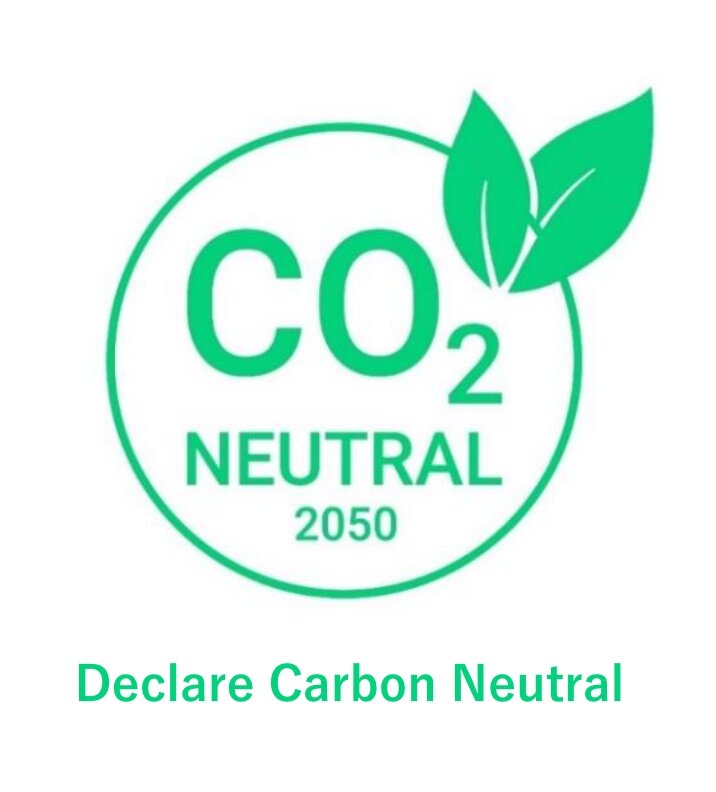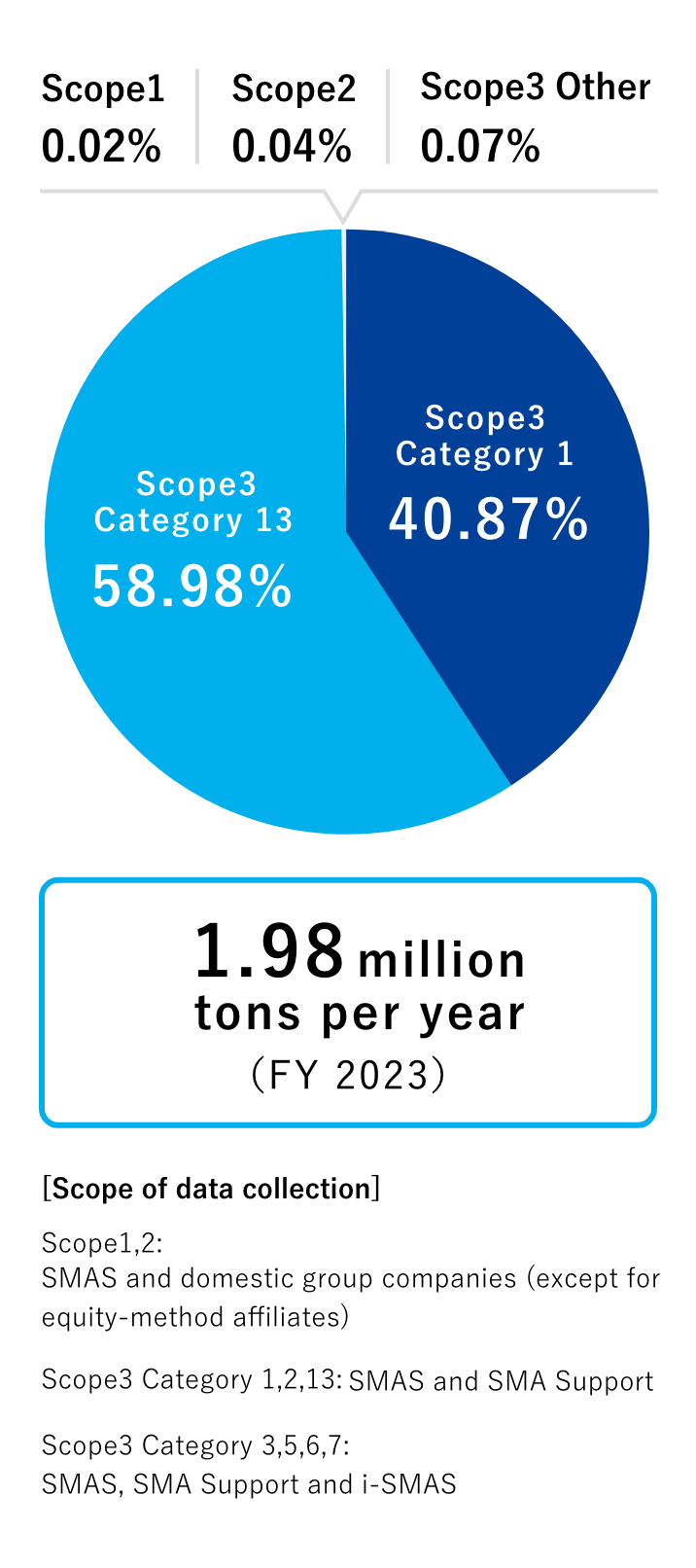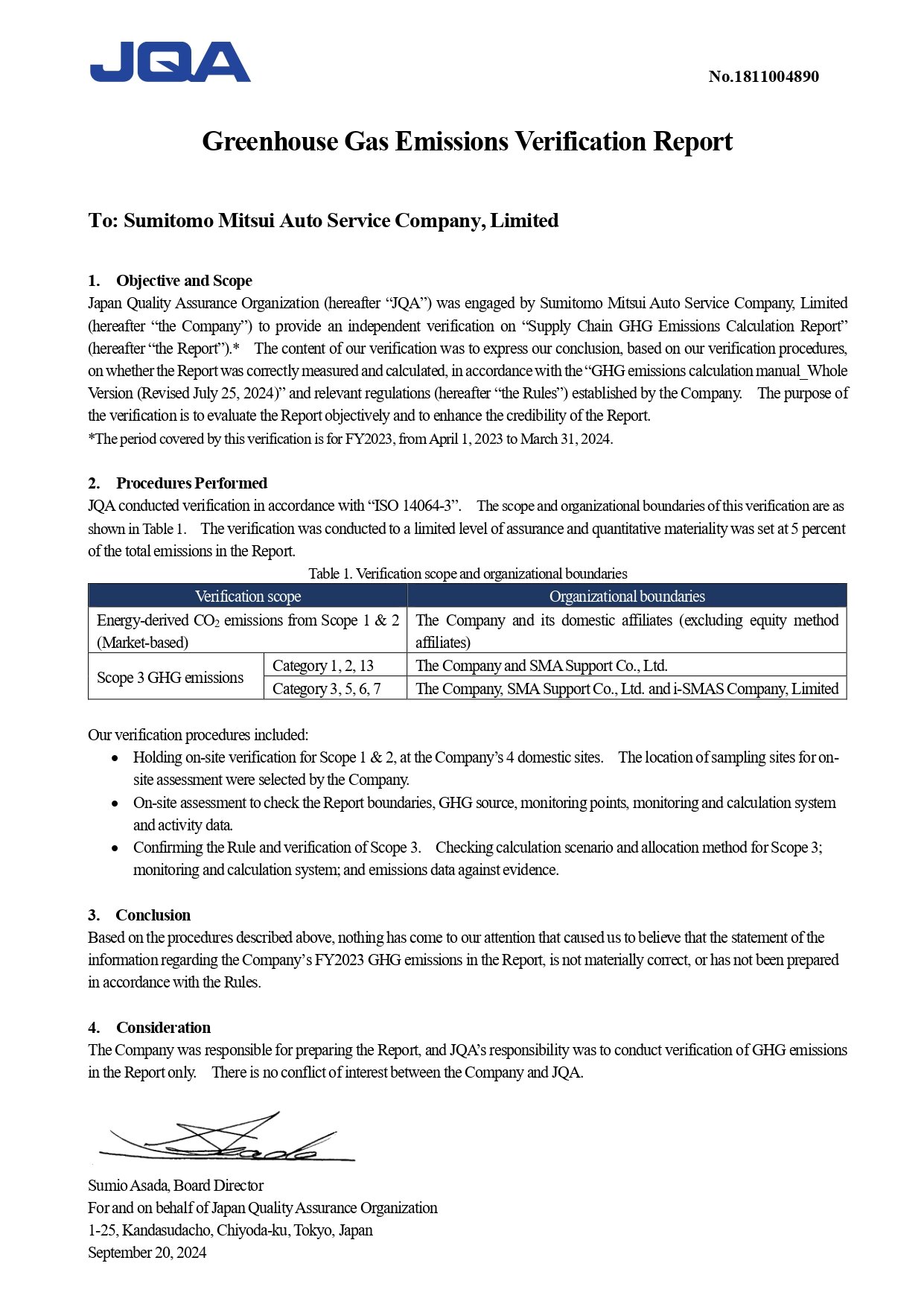Work on Carbon Neutrality
Sustainability
Work on Carbon Neutrality
The automotive sector faces a period of dramatic change, once in 100 years, and has begun EV strategies to be carbon neutral.
In order to achieve carbon neutrality, we anticipate that it takes a considerable amount of time to promote widespread use of EVs, as we face many issues to expedite infrastructure development and to control costs in addition to innovations of technological development, .
As a leading company of the automotive leasing industry, who supports mobility of around 45,000 customers and the owned and managed fleet of 1.02 million vehicles in and out of country, we declared 2050 carbon neutral in order to proceed with our EV strategies together with more partners. We will work as one to accelerate the decarbonization of the mobility society in order to promote use of EV.

Measures for Decarbonisation
To achieve 2050 carbon neutral status, we are working on decarbonisation measures divided into Scope1,2,3 three scopes
Scope1: Optimize the size of company car fleet and electrification
Scope1 covers direct emissions out of the use of company vehicles.
We are actively working to realize a decarbonized society based on our management philosophy of "contributing to the development of the automotive society and the improvement of the global environment." As part of such efforts, we leverage our service "Fleet Optimization Service" to reduce the number of company cars. In the four years from April 2020 to March 2024, we reduced the number of company cars by 26%.
In addition, we are accelerating electrification of our company cars because we believe it is crucial as a member of the automotive sector, that we demonstrate our commitment in reducing CO2. In FY2023, we electrified 45% of the fleet and we are aiming to increase this ratio to 55% by FY 2024 and to electrify whole fleet by FY2030.
Scope2: Change electricity sources to renewable energy
Scope2 covers indirect emissions associated with the use of electricity and heat at business sites.
Since all offices, including the head office, are located in tenant buildings, it is difficult to switch source of electricity to renewable energy. However, we are encouraging tenant buildings to use electricity derived from renewable energy sources at as many offices as possible. In FY2023, renewable energy use reached 47%, and we reduced CO2 emissions associated with use of power by 57% from FY2022 level.
| 100% renewable energy | Tokyo Head Office, Osaka Head Office, Minamitohoku Branch, Toyama Branch, Himeji Branch, Takamatsu Branch and Aomori Area Office |
|---|---|
| Partial conversion to renewable energy | Yokohama, Shizuoka, and Kumamoto Branch offices |
As of July, 2024
Scope3: Support for customers' activities to introduce and expand EV
Scope3 covers indirect emissions in categories 1, 2, 3, 5, 6, 7 and 13. Although emissions are not direct from us, they account for a high percentage of the entire supply chain. To aim building a decarbonized society, it is essential to reduce GHG emissions associated with the use of leased property (in downstream), which is particularly high-weight category 13. For this reason, we provide integrated support (EV one-stop service) to our customers, including the EV introduction planning and related services. Through these efforts, we will actively promote the introduction and expansion of EV among customers in the automotive leasing business and contribute to reducing CO2 throughout the supply chain.
Supply chain emissions
In addition to calculating Scope1,2 GHG emissions, the scope of computation was expanded to include Scope3 in FY2022. The scope of data collection began with SMAS itself and is now expanded to include SMAS and domestic group companies (except for equity-method affiliates). In the future, we also plan to compute emissions at overseas group companies.
Percentage of supply chain emissions
Scope1 and 2 emissions account for less than 0.1% of the total supply chain, and Scope3 emissions account for more than 99.9%.

1.98 million tons per year (FY 2023)
[Scope of data collection]
Scope1,2: SMAS and domestic group companies (except for equity-method affiliates)
Scope3 Category 1,2,3,5,6,7,13: SMAS and SMA Support
Third-party verification of supply chain emissions
We have obtained third-party verification to improve the reliability of our GHG emissions. In FY2023, we obtained "limited warranties" for our Scope1,2 and Scope3 (Categories 1, 2, 3, 5, 6, 7 and 13).

